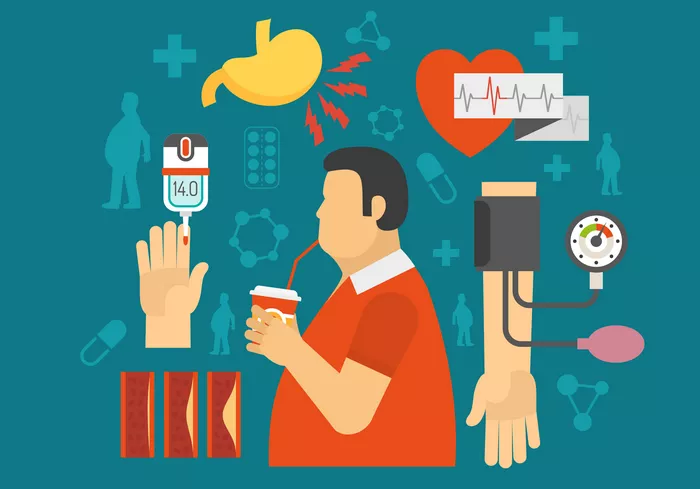Diabetes is a chronic condition that affects millions of people worldwide. Managing diabetes, particularly Type 2 diabetes, often requires a multifaceted approach that includes lifestyle modifications and pharmacological treatments. There are several classes of diabetes medications available, each working through different mechanisms to help control blood glucose levels. This article provides an in-depth overview of the different types of diabetes medications, their mechanisms of action, benefits, and potential side effects.
The Importance of Medication in Diabetes Management
Why Medication is Necessary
For many individuals with Type 2 diabetes, lifestyle changes such as diet and exercise may not be sufficient to maintain optimal blood glucose levels. Diabetes medications are often necessary to help control blood sugar, reduce the risk of complications, and improve overall quality of life. These medications work by various mechanisms, including increasing insulin production, enhancing insulin sensitivity, slowing carbohydrate absorption, and reducing glucose production in the liver.
Goals of Diabetes Medication
The primary goals of diabetes medication are to:
- Achieve and maintain target blood glucose levels
- Prevent acute and chronic complications
- Improve insulin function
- Preserve beta-cell function
- Enhance quality of life
Classes of Diabetes Medications
Metformin
Mechanism of Action
Metformin is the first-line medication for Type 2 diabetes. It belongs to the biguanide class and works primarily by reducing hepatic glucose production and increasing insulin sensitivity in peripheral tissues.
Benefits
- Effective in lowering blood glucose levels
- Low risk of hypoglycemia
- May aid in weight loss
- Cardiovascular benefits
Side Effects
- Gastrointestinal disturbances (nausea, diarrhea)
- Vitamin B12 deficiency with long-term use
- Rare risk of lactic acidosis
Sulfonylureas
Mechanism of Action
Sulfonylureas stimulate pancreatic beta cells to release more insulin. They are effective in reducing fasting blood glucose levels.
Benefits
- Rapid and effective reduction in blood glucose levels
- Long history of use and well-understood mechanism
Side Effects
- Risk of hypoglycemia
- Weight gain
- Possible decline in beta-cell function over time
Meglitinides
Mechanism of Action
Meglitinides, similar to sulfonylureas, stimulate insulin secretion from the pancreas but have a shorter duration of action. They are taken before meals to address postprandial blood glucose spikes.
Benefits
- Flexibility with meal timing
- Lower risk of hypoglycemia compared to sulfonylureas
Side Effects
- Risk of hypoglycemia (though lower than sulfonylureas)
- Weight gain
Thiazolidinediones (TZDs)
Mechanism of Action
TZDs enhance insulin sensitivity in adipose tissue, muscle, and the liver by activating peroxisome proliferator-activated receptors (PPARs).
Benefits
- Effective in improving insulin sensitivity
- Long duration of action
- Potential cardiovascular benefits with some agents
Side Effects
- Weight gain
- Fluid retention and edema
- Risk of heart failure exacerbation
- Potential risk of bone fractures
Dipeptidyl Peptidase-4 (DPP-4) Inhibitors
Mechanism of Action
DPP-4 inhibitors prolong the action of incretin hormones, which increase insulin release and decrease glucagon production in response to meals.
Benefits
- Low risk of hypoglycemia
- Weight-neutral
- Can be used in combination with other medications
Side Effects
- Risk of pancreatitis
- Joint pain
- Nasopharyngitis
Glucagon-Like Peptide-1 (GLP-1) Receptor Agonists
Mechanism of Action
GLP-1 receptor agonists mimic the incretin hormone GLP-1, enhancing insulin secretion, suppressing glucagon release, slowing gastric emptying, and promoting satiety.
Benefits
- Significant glucose-lowering effect
- Weight loss
- Cardiovascular benefits
Side Effects
- Gastrointestinal disturbances (nausea, vomiting)
- Risk of pancreatitis
- Injection site reactions
Sodium-Glucose Co-Transporter-2 (SGLT2) Inhibitors
Mechanism of Action
SGLT2 inhibitors work by blocking the reabsorption of glucose in the kidneys, leading to increased glucose excretion in the urine.
Benefits
- Effective in lowering blood glucose levels
- Weight loss
- Blood pressure reduction
- Cardiovascular and renal benefits
Side Effects
- Increased risk of urinary tract and genital infections
- Risk of dehydration and hypotension
- Risk of ketoacidosis (rare but serious)
Alpha-Glucosidase Inhibitors
Mechanism of Action
Alpha-glucosidase inhibitors delay carbohydrate absorption in the intestines by inhibiting the enzyme alpha-glucosidase.
Benefits
- Effective in reducing postprandial blood glucose spikes
- Can be used in combination with other medications
Side Effects
- Gastrointestinal disturbances (flatulence, diarrhea)
- Minimal risk of hypoglycemia
Amylin Analogues
Mechanism of Action
Amylin analogues, such as pramlintide, mimic the hormone amylin, which slows gastric emptying, suppresses glucagon release, and promotes satiety.
Benefits
- Reduces postprandial blood glucose levels
- Can be used in combination with insulin
Side Effects
- Nausea
- Risk of hypoglycemia (when used with insulin)
- Injection site reactions
Insulin
Mechanism of Action
Insulin therapy involves the administration of exogenous insulin to replace or supplement endogenous insulin. There are various types of insulin, categorized by their onset, peak, and duration of action (rapid-acting, short-acting, intermediate-acting, long-acting, and ultra-long-acting).
Benefits
- Essential for individuals with Type 1 diabetes and some with advanced Type 2 diabetes
- Highly effective in lowering blood glucose levels
- Can be tailored to individual needs
Side Effects
- Risk of hypoglycemia
- Weight gain
- Injection site reactions
Combination Therapies
Benefits of Combination Therapies
Combining different classes of diabetes medications can provide a synergistic effect, improving blood glucose control more effectively than monotherapy. Combination therapies can target multiple pathophysiological defects in Type 2 diabetes, offering comprehensive management.
Common Combinations
- Metformin and sulfonylureas
- Metformin and DPP-4 inhibitors
- Metformin and SGLT2 inhibitors
- Insulin and GLP-1 receptor agonists
Choosing the Right Medication
Individualized Treatment Plans
The choice of diabetes medication should be individualized based on various factors, including:
- The patient’s blood glucose levels and A1C targets
- Presence of comorbidities (e.g., cardiovascular disease, kidney disease)
- Risk of hypoglycemia
- Patient’s weight and weight management goals
- Side effect profile and patient tolerance
- Cost and access to medication
Role of Healthcare Providers
Healthcare providers play a crucial role in determining the most appropriate medication regimen for each patient. Regular monitoring and adjustments may be necessary to achieve optimal blood glucose control and minimize side effects.
See also: What’s the Pathophysiology of Type 2 Diabetes
Conclusion
Understanding the different types of diabetes medications is essential for effective diabetes management. Each class of medication has unique mechanisms of action, benefits, and potential side effects. By working closely with healthcare providers, individuals with diabetes can find the most suitable medication regimen to achieve and maintain target blood glucose levels, reduce the risk of complications, and improve overall quality of life. As research continues to advance, new medications and treatment strategies will likely emerge, offering even more options for diabetes management.
Related topics:
What is an Insulin Pump for Type 2 Diabetes?



























